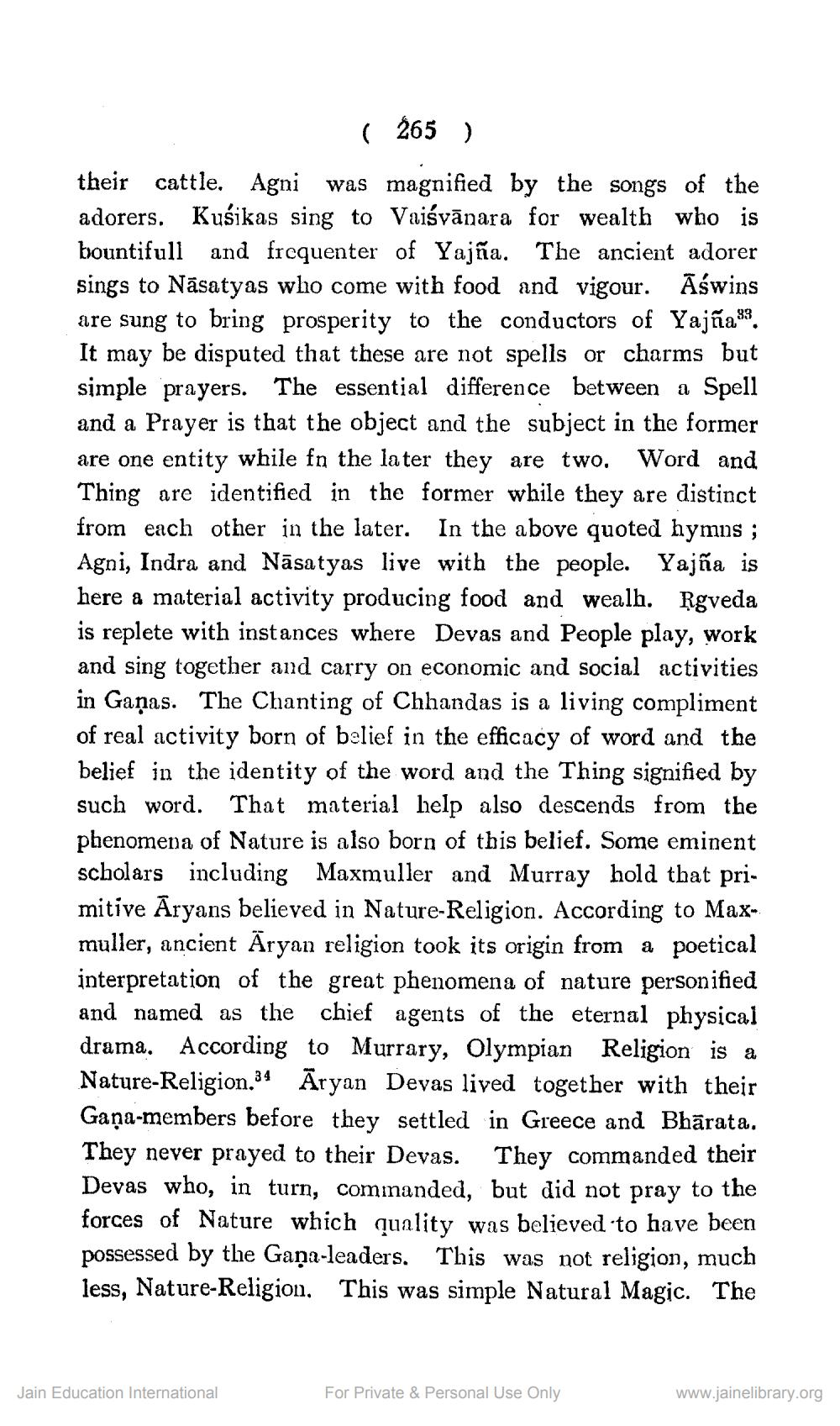________________
(265)
their cattle. Agni was magnified by the songs of the adorers. Kuśikas sing to Vaisvānara for wealth who is bountifull and frequenter of Yajña. The ancient adorer sings to Nāsatyas who come with food and vigour. Āświns are sung to bring prosperity to the conductors of Yajña". It may be disputed that these are not spells or charms but simple prayers. The essential difference between a Spell and a Prayer is that the object and the subject in the former are one entity while fn the later they are two. Word and Thing are identified in the former while they are distinct from each other in the later. In the above quoted hymns ; Agni, Indra and Nāsatyas live with the people. Yajña is here a material activity producing food and wealh. Rgveda is replete with instances where Devas and People play, work and sing together and carry on economic and social activities in Gaņas. The Chanting of Chhandas is a living compliment of real activity born of belief in the efficacy of word and the belief in the identity of the word and the Thing signified by such word. That material help also descends from the phenomena of Nature is also born of this belief. Some eminent scholars including Maxmuller and Murray hold that primitive Aryans believed in Nature Religion. According to Maxmuller, ancient Aryan religion took its origin from a poetical interpretation of the great phenomena of nature personified and named as the chief agents of the eternal physical drama. According to Murrary, Olympian Religion is a Nature-Religion.34 Aryan Devas lived together with their Gaņa-members before they settled in Greece and Bhārata. They never prayed to their Devas. They commanded their Devas who, in turn, commanded, but did not pray to the forces of Nature which quality was believed to have been possessed by the Gaņa-leaders. This was not religion, much less, Nature-Religion. This was simple Natural Magic. The
Jain Education International
For Private & Personal Use Only
www.jainelibrary.org




